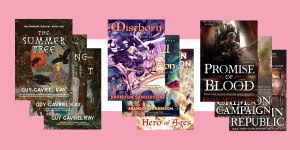How can your blog start exploding online? Do you just write and expect it to grow?
If it was that easy, many people would have had great blogs but there are more to the secrets of successful blogs.
Here’s a complete guide that breaks down marketing into three vital sections: pre-promotion preparation, email, and blog marketing and provides actionable tips on how you can market your blog right away.
How to Market Your Blog: Pre-marketing Preparation
Pre-promotion is an important aspect of a successful blog it is about how to have a successful start of a blog at the launch and can take quite a bit of your time, about 35-50 hours per week or 50-60 hours per week if you plan on using the blog as a main source of income.
1. Hosting
Selecting a reliable web host should not be taken lightly since it’s where your blog will be for the rest of its time. If you choose a poor web host, then you’ll suffer setbacks and frustrations like slow loading speed and negative SEO efforts. And, more importantly, if your visitors have a miserable experience.
2. Speed
Nobody likes a blog that takes too long to load, plus google prefers fast loading websites and rates them on it. Even if you are able to get a good web host, there are still a few tweaks you can make. For instance, WPX Hosting recommends using the W3 Cache WordPress plugin to make your web pages load faster.
3. Security
If you don’t put some security measures in place, you will get attacked at some point. Depending on your hosting service, you might already have robust security measures in place.
4. Choose your niche
Before you start making content for your blog you need to have a certain niche, or topic and have it in the interest of your target audience. If you pick a niche that nobody’s interested in, then you’re going to have a tough time promoting your content.
When you’ve finalized your niche, you can start planning what content to produce. Keyword research involves finding the keywords (or search queries) that represent your blog.
5. Research your audience
Researching your audience is an important part of writing. The first part of successful blogs is that the audience reads it because they write especially for that part of the audience. If you start posting random stuff according to trends, there won’t be a specific audience always on your blog, you need to target an audience and write for them.
6. Decide on your brand voice
This is the step after you have found your audience. How are you going to represent your content to your readers? Whether it be serious or humorous, formal or casual.
7. Do Effective Keyword Research
The very first step in properly optimizing your blog for SEO is to learn how to do keyword research. Keyword research is the process of finding the right words or phrases that your target audience is already searching for on search engines. So, if you can create great content that ranks high for those proven search queries, you’ll be in a great position to bring those readers to your blog.
If you’re relatively new to blogging still it’ll be difficult to instantly compete on the most sought blogs after search terms right away. You’ll want to build some momentum by finding keywords that have these three characteristics:
- Low difficulty
- Medium to high volume
- Medium to high click rate
You want to find keywords that a sizable number of people search for, yet not a lot of people are writing about yet. That’ll be the easiest way for you to quickly rank for keywords that can actually move the needle on helping you promote your blog.
Researching these keywords doesn’t mean you should forfeit your own ideas or interests for your blog, though.
Related: How To Do Keyword Research: A Comprehensive Guide For SEO Beginners
8. Target Long and Medium Tail Keywords
Expanding your keyword into a longer phrase that has a more clear search intent behind it, will give you a better chance of ranking in a meaningful place within organic search results.
This is called using long or medium tail keywords, and you can make your focus as narrow as you want to. The more narrowly you focus your content the more likely you’ll be able to rank for it quickly.
9. Make Sure You’re Nailing Your On-Page SEO
Finally, you’ve created a shortlist of the top medium and long-tail keyword phrases you should blog about. You can now start the writing process.
It’s important to remember that keyword stuffing is never a good idea but you should tastefully and contextually weave your keyword phrase throughout your blog post when there’s a normal opportunity to do so. Keep in mind that one of the biggest factors Google uses to determine what a post or page is about is the keyword phrase that’s used most.
The real key though is to make your content read as naturally as possible as if you’re speaking directly to a reader. It’s also fairly important to write a headline that includes your keywords and weave them into the subheadings throughout your content.
10. Research Your Competition
Before you start promoting your blog, it’s incredibly important to ask yourself this one question… What is your blog offering that others aren’t?
If you haven’t done so already, now is a good time to really dig deep and research how other top blogs in your niche are positioning themselves. Take very close note of which content topics they’re choosing to write about and examine closely how they’re approaching their content format for different categories of blog post types.
When doing your competitor analysis, seek to answer many of your questions:
- Can you tell what is and isn’t working on the top blogs in your niche?
- By comparison, what can your blog uniquely add to the world?
- What’s a new angle that you can take on an otherwise saturated topic to blog about?
One way to rank well on Google is by writing about something other people aren’t yet writing about. What are a few topics that might be interested in covering (that your audience will probably crave) where there’s a gap in the online marketplace right now?
Of course, you’ll still want to write about proven topics that people are already typing into search engines, but this is exactly where “low competition” keywords come into play.
11. Learn How To Promote Your Blog to Your Target Audience
Many bloggers sadly start out not really knowing who their main target audience is, which then presents itself to be a challenge if you’re trying to make a splash in your niche and become a well-regarded resource of people.
Until you begin publishing content and reaching out to online communities, it’s likely you won’t actually know who’s going to be most interested in connecting with you and your blog content.
It takes a bit of time to really learn who your audience is and what they’re interested in. Once you’re able to figure this out though, it becomes a hell lot easier to promote directly to them and thus focus solely on the promotion channels that get your content in front of your audience, while avoiding those who aren’t interested in your content.
How To Market Your Blog: Email Marketing
- Build your email list
- Enable social shares directly from email
- Include links to your blog and your posts in your email signature
- Nurture your email subscribers with marketing automation
- Send an email newsletter
- Send emails to launch your new posts
-
How To Promote Your Blog With Social Media
- Share your content in many places: Facebook, Twitter, LinkedIn, Instagram, Tumblr, Pinterest.
- Include your blog link in your social media profiles
- Clean up your open graph data
- Share your blog posts on social media right when you publish them
- Re-purpose your older, most successful content
- Stand out with visuals
2. How To Use Google+ To Promote Your Blog
- Know how often to post on Google+
- Optimize your messages with technical information
- Try +Post Ads to promote your blog posts
3. How To Promote Your Blog With Facebook
- Post the optimal amount of times every day
- Use Facebook to entertain your audience
- Tap into the fans in your Facebook Group
- Use popular hashtags to increase your reach
4. How To Use Twitter To Promote Your Blog
- Tweet more than 15 times a day
- Tweet helpful tips to stand out on Twitter
- Use hashtags to reach a larger audience
- Pin tweets to the top of your profile to get more retweets
- Try promoted tweets to share your most successful tweets with a larger audience.
5. How To Promote Your Blog With Pinterest
- Pin multiple times a day
- Write appealing Pin descriptions to inspire click-throughs
- Optimize your blog post visuals to encourage more Pins
- Use unique hashtags
- Grow your following with Pinterest group boards
6. How To Market Your Blog Posts To Increase Your Social Shares And Traffic
- Publish your blog posts at the best times to reach your goals
- Write comprehensive blog posts
- Choose the best headline type to get traffic, shares, and search results
- Focus on practical utility to get more social shares
- Include a number in your headline to double your social shares
- Hook your readers with a powerful blog post introduction
- Write emotional headlines to get more social shares
Blog promotion
Blog promotion starts after you have made the blog and have started making content. It can be fun or exhausting depending on how you do it.
- UTM tracking URLs – use Google’s Campaign URL Builder to create a tracking link for each platform you promote your article on. This will help you track traffic more accurately.
- URL – start with your standard blog post URL
- Headline variations – write out 3-5 headline variations for your post.
- Longer social messages – write out several slightly longer social messages for use on LinkedIn, and Facebook, etc. Popular copywriting formulas work well here.
- Short social messages – write out several short social messages for use on Twitter. These can be quotes, questions, or based on headline variations.
1. Guest blogging
To this day guest blogging is one of the best ways to promote your blog.
The key to guest blogging is to write your best content for different blogs in your niche that have a high volume of followers and subscribers. Include a link in your author bio to a landing page on your site where visitors can get an exclusive download or find more about your services.
2. Blog commenting
If you start commenting on one of the top blogs in your niche, you’ll start getting attention from many other commenters and the blog owner. And if your comment is useful, then other readers will probably go and check out your blog.
But, more than anything this is about relationship building – some great connections can come out of it as a result.
It’s those connections that will ultimately help you promote your content better in future.
3. Paid marketing
Paid marketing can get results rather quickly but it’s also non-organic and many people don’t use this method because it’s about actually spending money regularly.
4. Social media advertising
As social media organic (non-paid) reach declines, you may have to consider paid advertising.
Each and every social media platform has different demographics and advertising formats. For example:
- Video Ads on Facebook
- Carousel Ads on Instagram
- Promoted Pins on Pinterest
So you may need to consider these things:
- The best social network for your campaign; i.e. where your audience hangs out
- The best advert format; e.g. images, video, text
- The costs per network and your budget
5. Content discovery platforms
Content discovery platforms sometimes known as Native Advertising like Outbrain provide another option to promote your content.
The native ads are usually designed to look and feel like they belong personally on the publisher’s website. They usually appear at the end of an article presented as: “You May Like”,or “Promoted Stories”.
6. Search advertising
Like the name suggests search advertising places advertisements in search engine results. It’s also referred to as PPC (Pay-Per-Click) advertising because you have to pay a small fee every time somebody clicks on your ad. You’ll see them at the top of Bing and Google SERPs denoted with an ‘Ad’ icon.
















